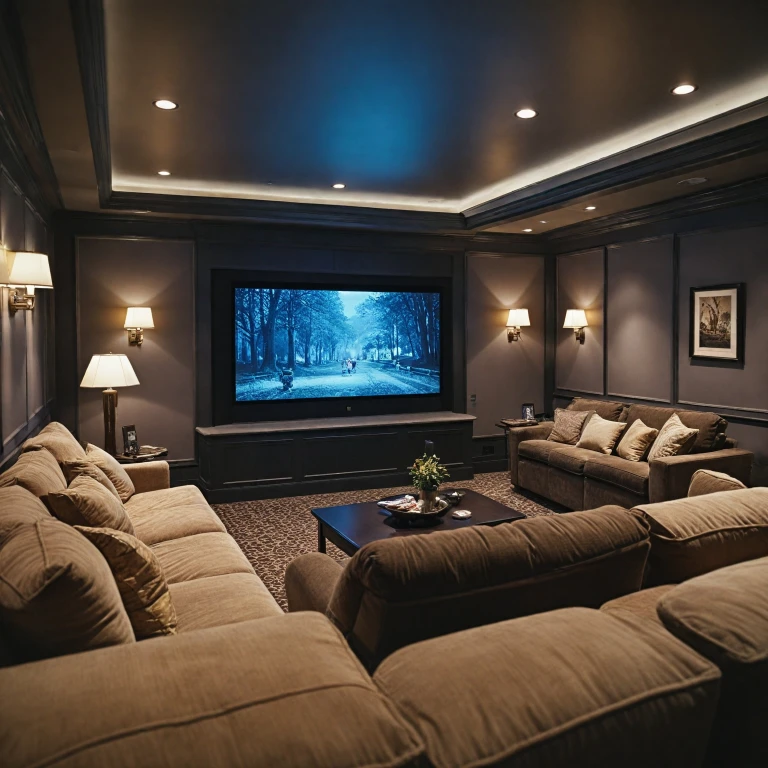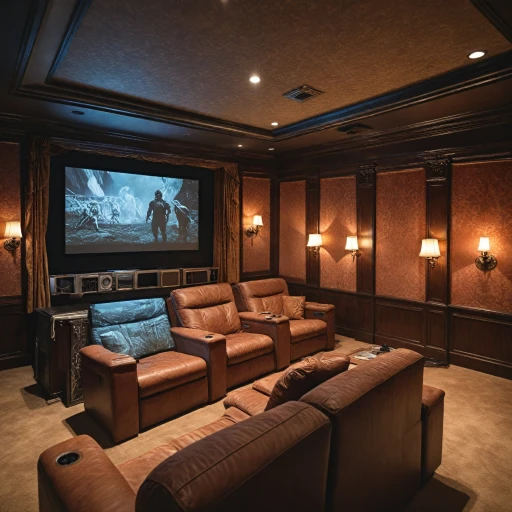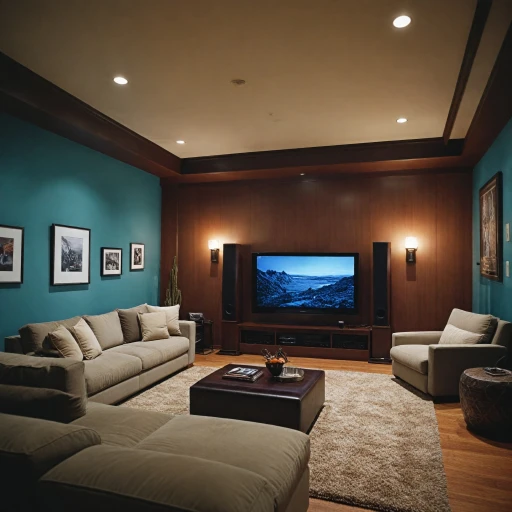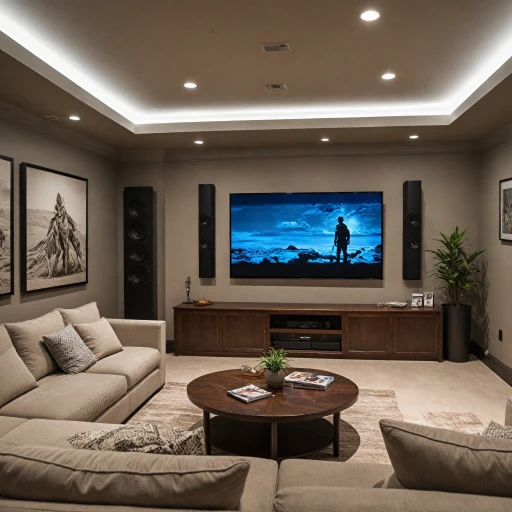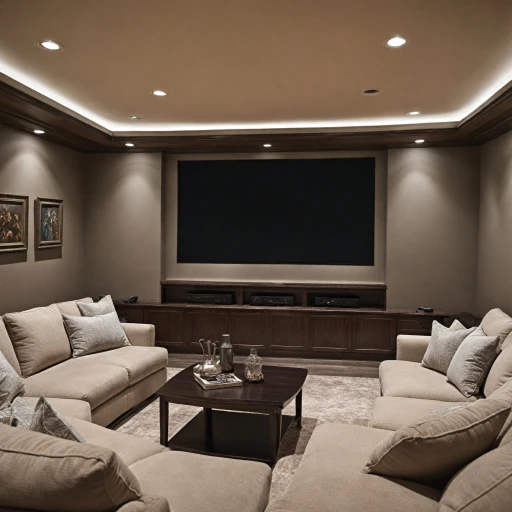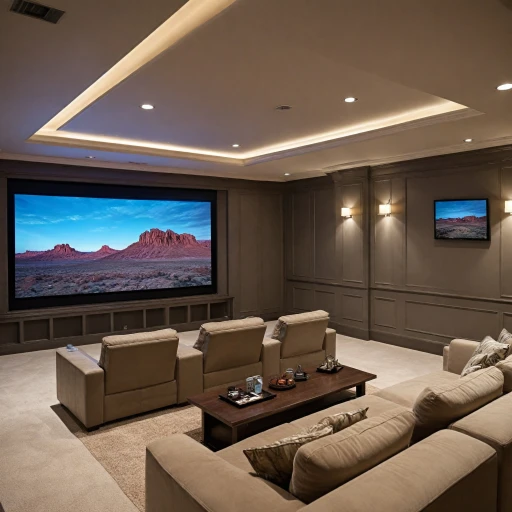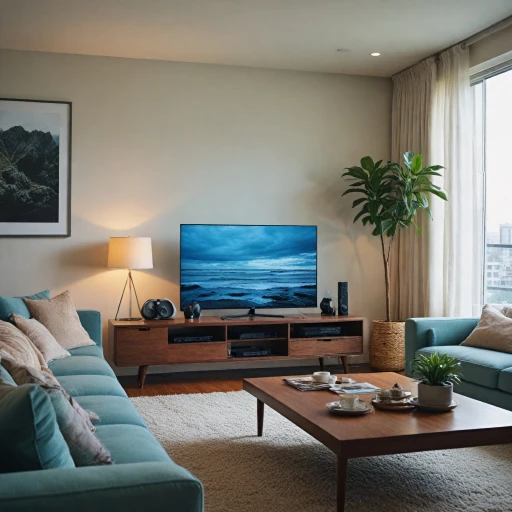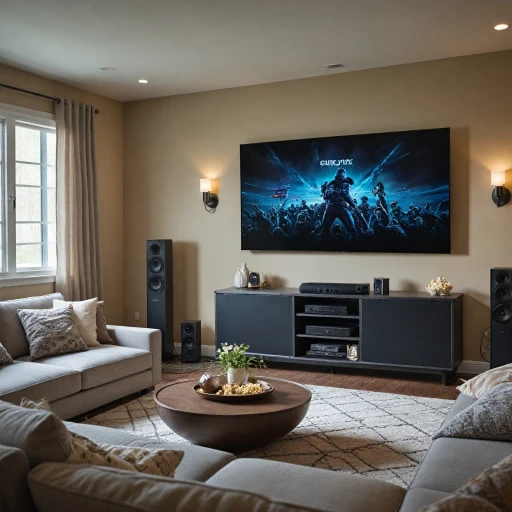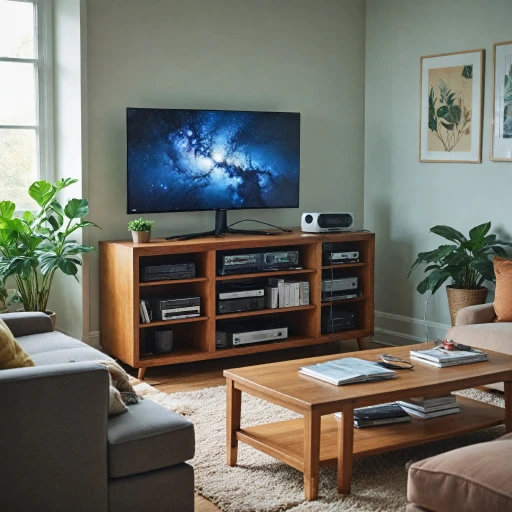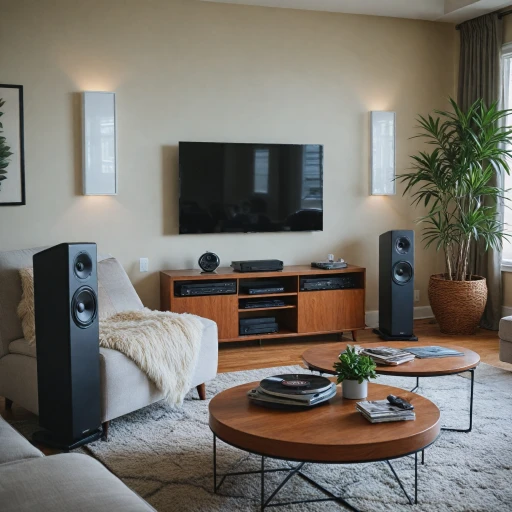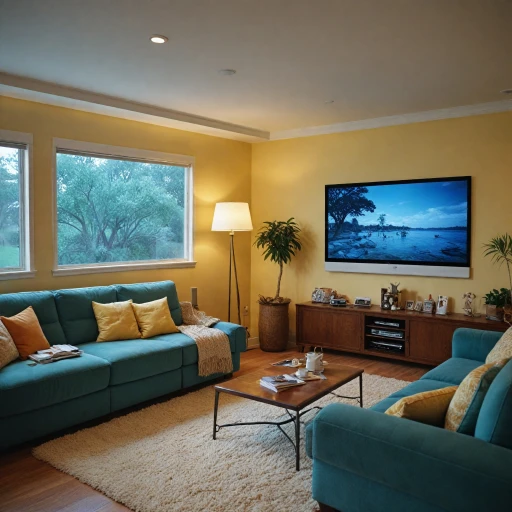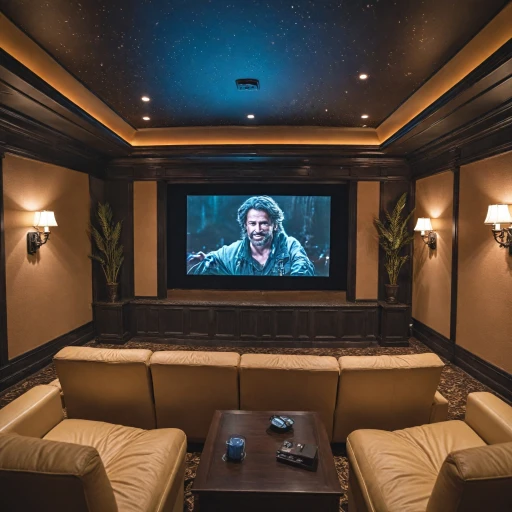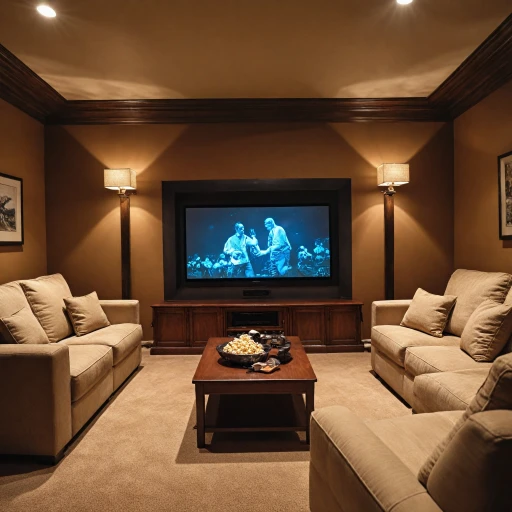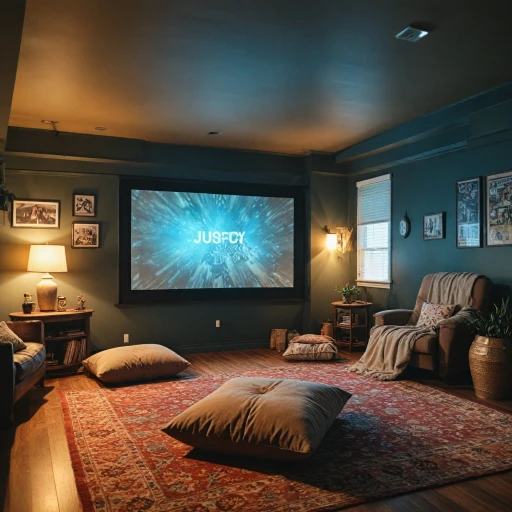
Understanding Screen Types
Exploring Different Types of Projection Screens
When choosing the perfect screen for your home cinema projector, it's essential to consider the different types of projection screens available on the market. Screens vary in price, materials, and features, so understanding the differences can help you make an informed decision that suits your specific needs. Firstly, you can choose between fixed-frame screens, which offer high-quality visuals and are ideal for dedicated home theaters, and retractable screens, which can be easily rolled up when not in use. Portable screens are also an option for those who need flexibility in setup, such as moving between rooms or even outdoors. Another popular choice is the tab-tensioned screen, which provides better flatness and image clarity, crucial for elite home theater experiences. However, these models may come at a higher price point. Alternatively, manual pull-down screens are more budget-friendly and easy to set up, making them suitable for temporary or outdoor projector setups. Rear projector screens are designed to work with specific projectors, offering a unique viewing experience by projecting the image from behind the screen. These screens are often used in conference rooms or unique home theater installations. It's important to select the right model number and screen type based on your home theater projector's specifications, keeping in mind how each screen type interacts with your projector’s capabilities. Whether you're considering EPV screens or looking for an elite proav model, conducting thorough research including reading reviews and consulting experts can be beneficial. Whatever your choice, making an educated decision on the type of projection screen is a crucial first step in creating a stunning visual experience in your home theater, ensuring every movie night or presentation is high quality and seamless.Screen Material Matters
Importance of Choosing the Right Material
When it comes to selecting the perfect projection screen for your home theater, understanding the significance of screen material is crucial. The material of your screen plays a significant role in defining the quality of your viewing experience. High-quality screen materials can enhance the colors and contrast of the image projected by the projector, creating a vivid and immersive theater-like environment at home.
Popular options in the market include products from elite screens, known for their diverse range and competitive price points. Materials such as woven fabrics, which are used in many high-end screens, provide excellent acoustic transparency—making them an excellent choice for those who prioritize sound as much as picture quality. Matte white screens are often favored for their uniformity in light dispersion, while black screens can offer enhanced contrast, particularly in rooms where ambient light needs to be controlled.
Matte and Black: Finding the Right Balance
Matte white screens are commonly recommended for spaces with controlled lighting. They allow the projector's light to be evenly spread across the screen surface, which minimizes hot-spotting. On the other hand, black screens, though more on the expensive side, are best suited for rooms with ambient light challenges. They enhance black levels and contrast, which is especially beneficial in environments that are not entirely dark.
For outdoor sets or portable options, materials should be durable and weather-resistant. EPV screens and elite proav models, for instance, often include features suitable for various environmental conditions, ensuring longevity and performance.
Acoustic Transparency and Its Benefits
If you’re setting up a high-quality home theater system with advanced audio equipment, considering acoustically transparent screens is worthwhile. These screens allow sound from speakers placed behind the screen to pass through without distortion, maintaining a seamless and immersive audio experience. For projection enthusiasts who value audio as much as visuals, investing in acoustically transparent materials might be the key to a complete theater experience.
Understanding and selecting the right screen material is essential for your home theater setup. To dive deeper into this aspect, you may want to explore how a 150-inch projector screen could enhance your viewing experience by checking out this insightful article.
Size and Aspect Ratio Considerations
Finding the Right Dimensions
When selecting a screen for your home theater projector, understanding size and aspect ratio is crucial. The dimensions of your screen need to complement the projector and the available space in your room. Proper consideration will ensure an immersive viewing experience akin to that of a cinema.- Aspect Ratio Options: The two most common aspect ratios are 16:9 and 4:3. The 16:9 aspect ratio is ideal for movies and television, providing a widescreen experience. It’s often used with elite proav projector screens that promise high-quality viewing. The 4:3 aspect ratio is more traditional, often used in conference rooms and suits presentations.
- Screen Size: Determine what size screen fits your projection needs correctly. Measure the distance between where your projector will be placed and the wall for projection. This will guide you in selecting a screen size that suits both the projector’s throw distance and the room’s size. Models with adjustable height like Elite Screens are ideal for those seeking flexibility.
- Room Considerations: Your home's layout affects the size decision. A large room can accommodate a bigger screen, like the tab tension options or rear projector models, enhancing the theater feel. For those with limited space, consider portable or outdoor projector screens that offer unique options like easy set up.
- Making Adjustments: As technology advances, features like adjustable heights and various aspect ratios mean your choice isn't limited to a static setup. For example, elite home theater projection screens may come with aspect ratio adjustability, catering to different types of content seamlessly.
Ambient Light and Screen Color
Screen Color and Ambient Light Influence
When planning your home theater setup, don’t overlook the significant impact of ambient light on screen color and visibility. Given the various environments, whether it’s a dedicated theater room or a multi-purpose space, understanding how light affects screen performance is crucial. Consider different projector screens to match your ambient light conditions:- White screens: Ideal for controlled lighting environments, these screens provide bright and vivid images in rooms where you can limit the light effectively. They are prevalent among enthusiasts looking to keep the price within budget and ensure their screens are easy to set up.
- Gray or black screens: These screens excel in brighter rooms by enhancing contrast levels through the suppression of unwanted light. If your theater room doubles as a conference room or an outdoor space, opting for a darker screen will enhance image clarity and quality.
Installation and Mounting Options
Consider Your Installation Options
When planning your home theater setup, choosing the right installation and mounting options for your projector screen is just as important as other factors. You’ll need to think about where and how to install your screen to create the best viewing experience.
Fixed projector screens are often preferred for their sleek and professional appearance, providing a permanent solution that fits seamlessly into a dedicated home cinema space. However, if you're looking for something more versatile, portable options might be a better fit, especially for outdoor theater setups. These can be easily moved and set up, allowing for flexibility.
If your configuration involves a rear projector, your screen’s mounting options will differ compared to traditional front projection. Take into consideration the distance from the projector to the screen and ensure that the setup allows room for optimal performance without obstruction.
Many projectors screens, including those from elite screens and EPV screens, come with adjustable height features, allowing for easy customization based on room size and viewer preferences. Installation can range from simple wall mounts to more complex tab tension systems that ensure a flat, high-quality surface.
It’s also essential to think about the room's privacy policy, especially if your home cinema is in a shared or common space. Soundproofing or partitioning with screens can enhance the viewing experience.
And remember, shipping and installation services can add to the overall price of your home theater project. Always include these costs when budgeting for your screen setup, and check with manufacturers about any included services or lower price options for installation in the united states.
Budgeting for Your Screen
Budget Considerations for Your Home Theater Screen
When planning your home theater setup, budgeting for your screen is a crucial step. The price of projector screens can vary significantly, depending on factors such as size, material, and brand. It's essential to balance your desire for high quality with what you can realistically afford.
Here's a quick guide to help you navigate the costs:
- Basic Screens: These are often the most affordable, with prices starting as low as a few hundred USD. They're ideal for those who want a simple setup without breaking the bank.
- Mid-Range Options: For a bit more investment, you can find screens with enhanced features like adjustable height or tab tension. Brands like Elite Screens and EPV Screens offer models that provide excellent value for the price.
- High-End Screens: If you're aiming for a premium home theater experience, consider investing in high-quality screens. These often come with advanced features such as rear projection capabilities and are perfect for both indoor and outdoor projector setups.
Don't forget to factor in additional costs such as shipping and installation. Some screens are easy to set up yourself, while others might require professional installation, especially if you're dealing with a larger or more complex model.
Reading reviews can also be helpful in determining which screen offers the best value for your money. Look for feedback on durability, ease of installation, and overall performance. This can guide you in making an informed decision that aligns with your budget and home theater needs.
Ultimately, the right screen for your home theater will depend on your specific requirements and financial constraints. Whether you're setting up a portable outdoor projector or a fixed screen in your conference room, there's a model out there that fits your needs and budget.
